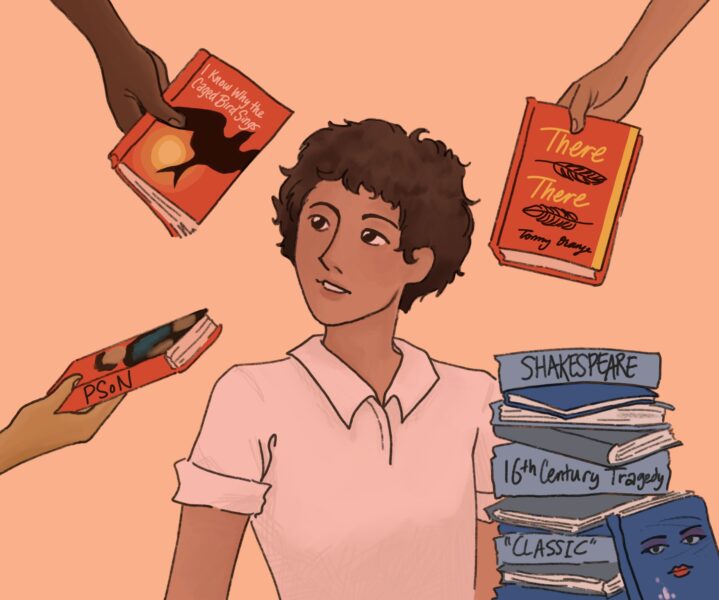

From “hard work pays off” in “Three Little Pigs” to “don’t talk to strangers” from “Little Red Riding Hood,” teachers have relied on simple folktales to share such messages with kids as early as elementary, or even preschool. Books can approach important themes and lessons. Although it might seem rudimentary, the same idea applies in high school as well.
Over the years, the English curriculum at Aragon has evolved to reflect the diversity within the student body. In 2010, California established a new set of standards in language arts with higher standards aiming to ensure every student was college and career-ready and placed more emphasis on understanding identity. In 2018, the courses of study were revised to reflect the new standards.
“There [are] themes that have to do with self [identity], understanding others and empathy,” said Brian Simmons, Director of Curriculum and Assessments for the San Mateo Union High School District. “We want to make sure students are learning about [these] in the context of … academic skills around reading and writing and being able to make arguments.”
When choosing books for the school year, the district provides teachers with a San Mateo School District Board-pre-approved list of novels. New board policies such as the Racial Equity Board Policy affect changes in the book choices.
“In our recent past, teachers have been asked to examine the texts that we teach in our classroom with an equity lens,” said English 4 teacher Vince Bravo. “The district has guided some of that conversation, but as with all things in the world of education, making those sorts of changes goes slowly and there is a financial cost attached to mak[ing] any sort of changes.”
Adopting a new text requires teachers to rewrite all curricula to meet state standards and fit with the schedule.
“There is a huge time investment for teachers to develop daily lessons,” Bravo said. “Oftentimes, an English class is with a novel for five to six weeks, [which] means that every single one of those days needs to be revised. That makes a piloting program very difficult because then you are committing to creating an entire unit that may not be used in the future. However, of course, when you find a good novel to teach and that works, it’s great.”
There are many factors to consider when choosing books for a specific English class, including vertical planning, which creates a framework to prepare students for future grades.
“[In Advanced Placement English Language,] we only have time to read two fiction books, since it’s a nonfiction-based curriculum, [so] I want to choose literature that is challenging syntactically, rich in subject manner and are books that students haven’t read on their own,” said AP English Language teacher Victoria Daniel. “That also could be used on the [AP English Literature] exam because I’m also part of a vertical [planning] team that [works] to prepare … students for that.”
The district has aimed to make changes rooted in increased representation of students.
We’re trying to reflect the anti-racist journey that we’re on in the district
“We’re trying to reflect the anti-racist journey that we’re on in the district,” Simmons said. “To really try to make sure that students are both reflected in the literature that they’re reading [and] learning about the experiences of other people through literature that’s more reflective of a more contemporary diverse population of people.”
Through literature, students can take away important values taught through a diverse set of books.
“We’ve definitely diversified our choice of literature,” Daniel said. “There are [many] more writers of color in our curriculum … [which is motivated by the] changing student body and awareness or really a desire to expose students to a wider variety of subjects and authors.”
Many of the chosen books are considered “classics,” with themes applicable to readers today despite being of a different era, such as “Lord of The Flies” and “Frankenstein,” written by authors William Golding and Mary Shelley. Students have also noticed other trends in stories taught throughout the years.
“I noticed [the] books [we read] expose high school students to other cultures and societies, especially if there is an aspect of currentness to them,” said junior Yael Boaz. “For example, while reading ‘Patron Saints of Nothing’ [in English 10AS] we learned about real issues that the Philippines were facing and while reading ‘There There’ [in AP English Language] the novel would reference landmarks in Oakland and the Bay Area that we would recognize, along with historical events we had learned about.”
Over the years, the English curriculum has undergone many changes to promote variation and adapt to the growing diversity in the student body. Although changes take time and constant adjustment, these changes are intended to benefit students developing their values and worldview.




